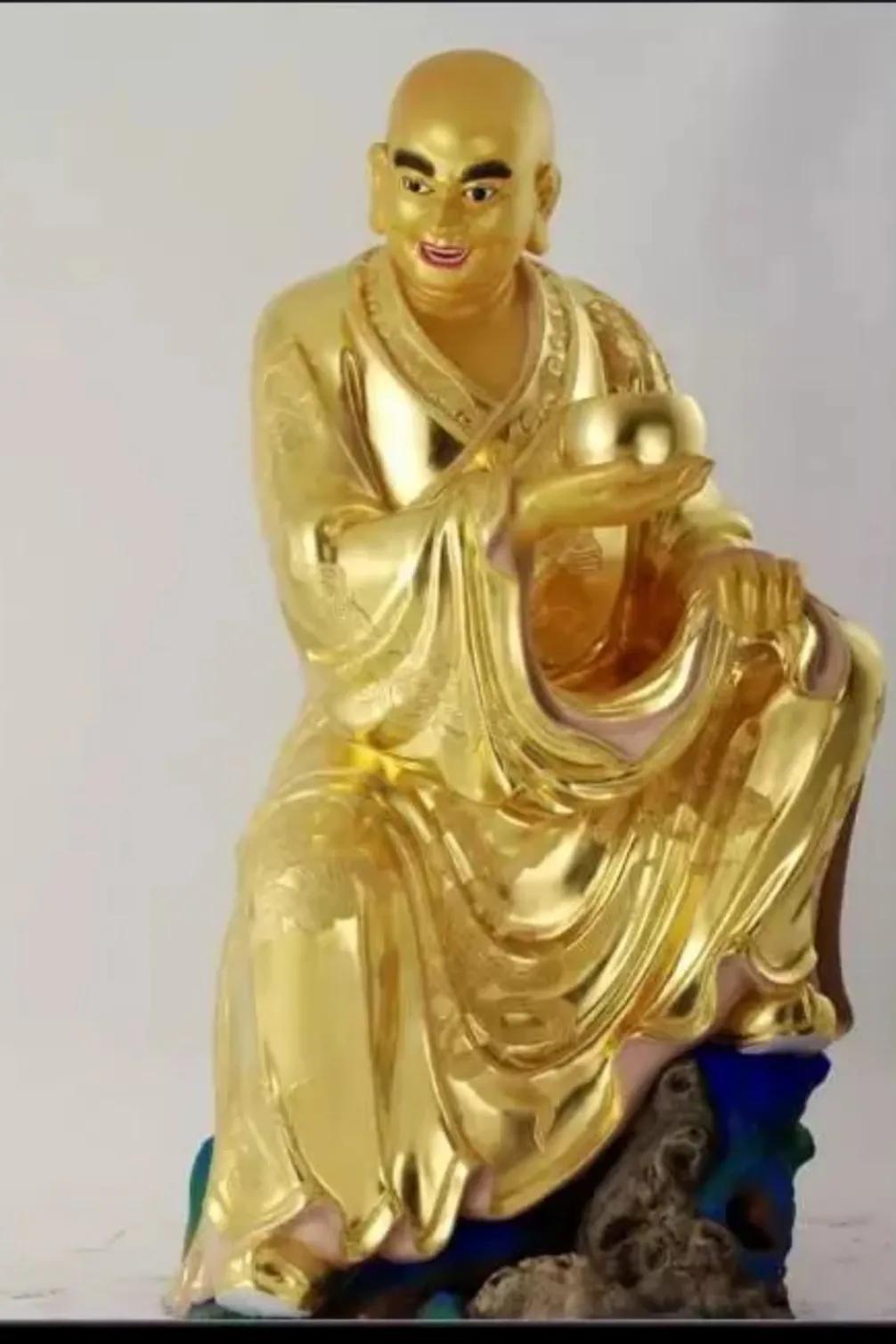
Raise the bowl of Arhat
The third of the Eighteen Arhats, His Holiness the Ganodh Vali, is commonly known as the Arhat. It is said that the ganoga vali inert gandharma incarnated his ancestors in a very unique way, always lifting the iron bowl above the top, so after cultivating into an arhat, the world called it "lifting the bowl arhat". In fact, he took advantage of the opportunity of the incarnation to benefit the people of the world through the action of entrusting the bowl, preaching the Dharma to sentient beings, teaching sentient beings by example and words, promoting compassion and equality, and planting merit for sentient beings.
When it comes to bowls here, do you know the origin of bowls? In fact, there was no word for "bowl" in China, and this bowl word was created from the first sound of "bowl dora" in Sanskrit. Bowl Dora is a food utensil used by monks to hold meals, mostly made of metal, so the word "bowl" is next to the golden word, and the original word is next to its sound. Common bowls are iron bowls, mud bowls and wooden bowls, but according to the Buddhist law of the Central Plains, bowls are only allowed to be made of tile and iron, and cannot be made of "gold, silver, copper, glass, wood, stone..." and other materials. The color of the bowl is limited to black and red. Moreover, each monk is only allowed to have one bowl, as long as it is not leaked, it is not allowed to be replaced, and the size of the bowl is also equivalent to the amount of his own meal. Therefore, in the journey to the West of the novel, do you remember the purple gold bowl that Tang Taizong gave to Tang Xuanzang, and finally this purple gold bowl was given to the two Venerables of Dajiaye and Ananda as a "personnel" in the Great Lei Yin Temple, which is actually the plot need of the novel, and in reality it is contrary to the precepts. Of course, enlightened monks like Tang Xuanzang, as well as the two noble monks of Buddhism, Dakaya and Erzu Ananda, naturally did not care about the nobility or material of the bowl, and focused on the Buddha, and everything outside the body was empty.
Among the Buddhist allusions, there is also a small story related to His Holiness the Ganodh Vali, the story of the immortal child. Ganoga Pali was not very good-tempered, and on one occasion, Ganoga Vali was in a dispute with other disciples because of disagreement, and the two sides did not give in to each other. When the Buddha discovered this, he gathered the masses to preach:
"Don't argue, there will be no result in using a dispute to eliminate a dispute, only tolerance can eliminate a dispute." I hope that you will all respect the virtue of forbearance. In order not to let them continue to quarrel, the Buddha specially told them the story of the immortal child. The gist of the story goes something like this:
Previously, King Fanyu led a large army to invade the land of king Changshou, and king Changshou led his troops to resist and capture King Fanyu alive, but king Changshou was kind and let king Fanyu go. Unexpectedly, this Fanyu King invaded again, and the Longevity King, in order to avoid the war that would lead to unjust retribution and the destruction of the lives of the people, gave way to the Fanyu King, and the Fanyu King was not only not grateful, but killed the Longevity King, who had become a commoner. Before his death, the King of Longevity instructed his son, the Immortal Boy, to be merciful and not to form resentments. The immortal boy later became anonymous and gained the trust of King Fanyu as his personal bodyguard. The Immortal Boy not only did not kill King Fanyu, but also saved his life repeatedly. Finally, when King Fanyu learned the truth, he was thoroughly moved, returned all the land owned by the immortal boy, and promised never to commit a crime again. At this point, the war was over and the people were able to live and work in peace and contentment.
After the story was told, Shakyamuni told his disciples: With sincere faith, you have left your hometown, cut off your love and relatives, and in order to explore the truth of the universe and verify the reality of life, you should practice forbearance, praise and humiliation, practice compassion, praise compassion, and give favors to all sentient beings. Because the reality of the universe is one, there should be no dispute between you and me!
After the disciples listened, they realized greatly, stopped arguing, learned to be kind and compassionate, and meditated on cultivation. Later, many of the disciples cultivated arhats, and the Ganodh Vali inert was even better, becoming a representative of the arhats and was designated by the Buddha as one of the sixteen arhats.
The image of the inert of ganoga vali and the lifting of the bowl means that the world is widely related to good relations and benefits the world.